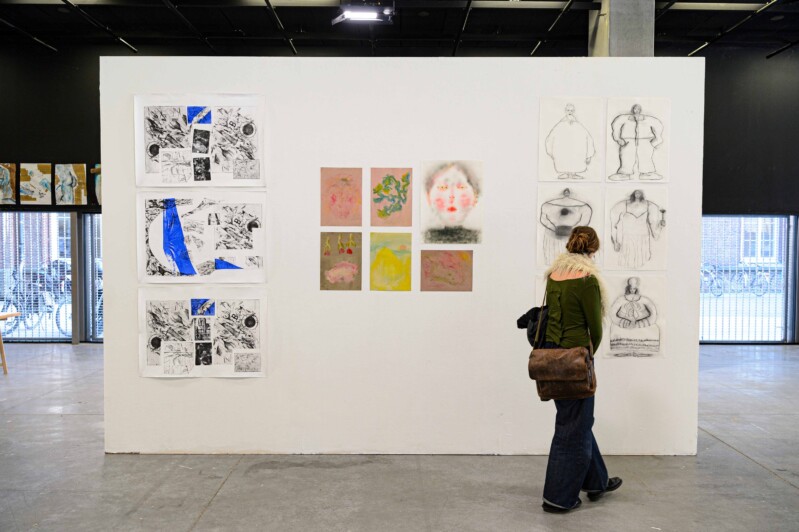graphic design:
printmaking
graduating option graphic design
study path printmaking
3+1 jaar
English master
read more about the programme
Art and reproduction
In the printmaking study path, the practice of art is essentially developed with the possibilities of analogue and digital printing processes and techniques and is always in relation to the issue of reproduction. You can play with these possibilities: working in series of images, in print runs, in relation to the word, with printed text or text elements, deploying the specific technical and material qualities of the printing and other (re)production processes, publishing editions, making artists' books,...
Technical-artistic experimentation, analysis, interpretation
Step by step and with sufficient room for practical practice, experimentation, analysis, interpretation and reflection, students are introduced to the complexity and myriad possibilities of the various analogue or digital graphic printing and image(re)production processes.
In the first year, the emphasis is on exploring and experimenting with mainly historical analogue printing techniques, such as dry needle, monotype, linocut, pronto plate, silkscreen, line etching, aquatint, ... Nevertheless, it also already initiates working with digital printing processes or techniques such as printing with large-format printers or working with the possibilities of laser cutting. Mastering these techniques and experimenting with them are encouraged by establishing an exploratory individual practice that can take various forms, including drawing, writing, collage, note-taking, photography, sound recording, and so on.


In the second year of the bachelor's programme, we delve deeper into the previously taught techniques and introduce new processes and skills, such as etching, aquatint, vernis mou, chine collé, lithography, gluing and binding of publications... The many aspects of digital image (re)production processes also receive due attention. During this second bachelor year, we also deal with specific themes and characteristics of graphic practice, such as the relationship between image and text and word and work, the artist's book, the use of photography in printed matter, printing editions, ... Our guidance and feedback in this second year mainly focus on learning to analyse work processes and learning to reflect on the results that emerge from a searching practice. To support this, presentations are regularly given during studio classes where we illustrate analyses of such processes in important, well-known graphic artworks. We pay ample attention in specific theory classes (theory and history of graphics) to the mass-media contexts that influence graphic practice and graphic art.
In the third year of the bachelor’s programme, we place greater emphasis on learning and deepening various analogue and digital printing processes and techniques that are specifically suited to the work development of the individual student. In this third year, in addition to making artist publications, the making of audiovisual graphic work becomes extra important. The searching and making should result in precisely executed works that are integrated into small projects, which may culminate in an overarching bachelor's project.
study programme bachelor
study programme master
enrolment & tests
how do you register for the bachelor's degree?
see the dates and assignments for the test
how do you register for the master's degree?
see the dates and assignments for the test
If you want to apply for an academic bachelor's degree, you must first pass an artistic admission test. To enter the master's programme, you will take part in an orientation test. These are organised several times per academic year.
2, Louis Pasteurlaan
9000 Ghent
5, Offerlaan
9000 Ghent
credits
- Atelier printmaking, video: Manon De Sutter & Charles Dhondt
- Judith Pepermans, Droge naald
- Leenaerts Fien, Graduation 2023, photo: Giada Cicchetti












